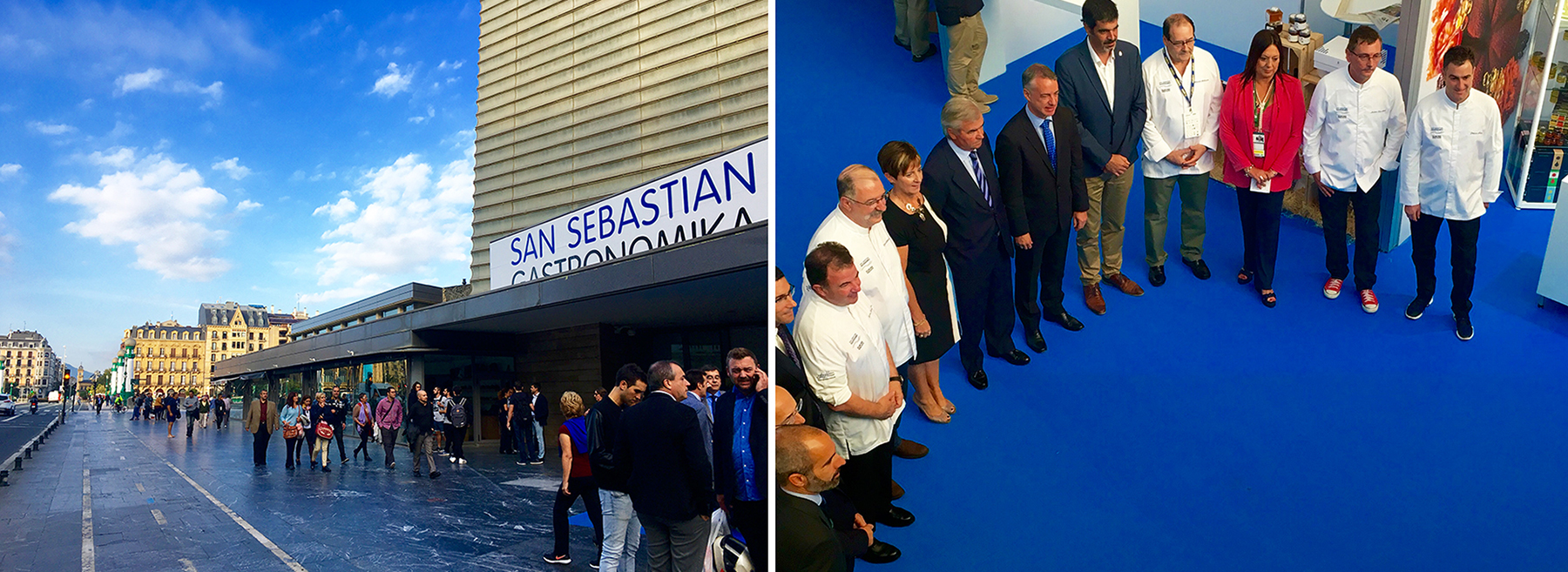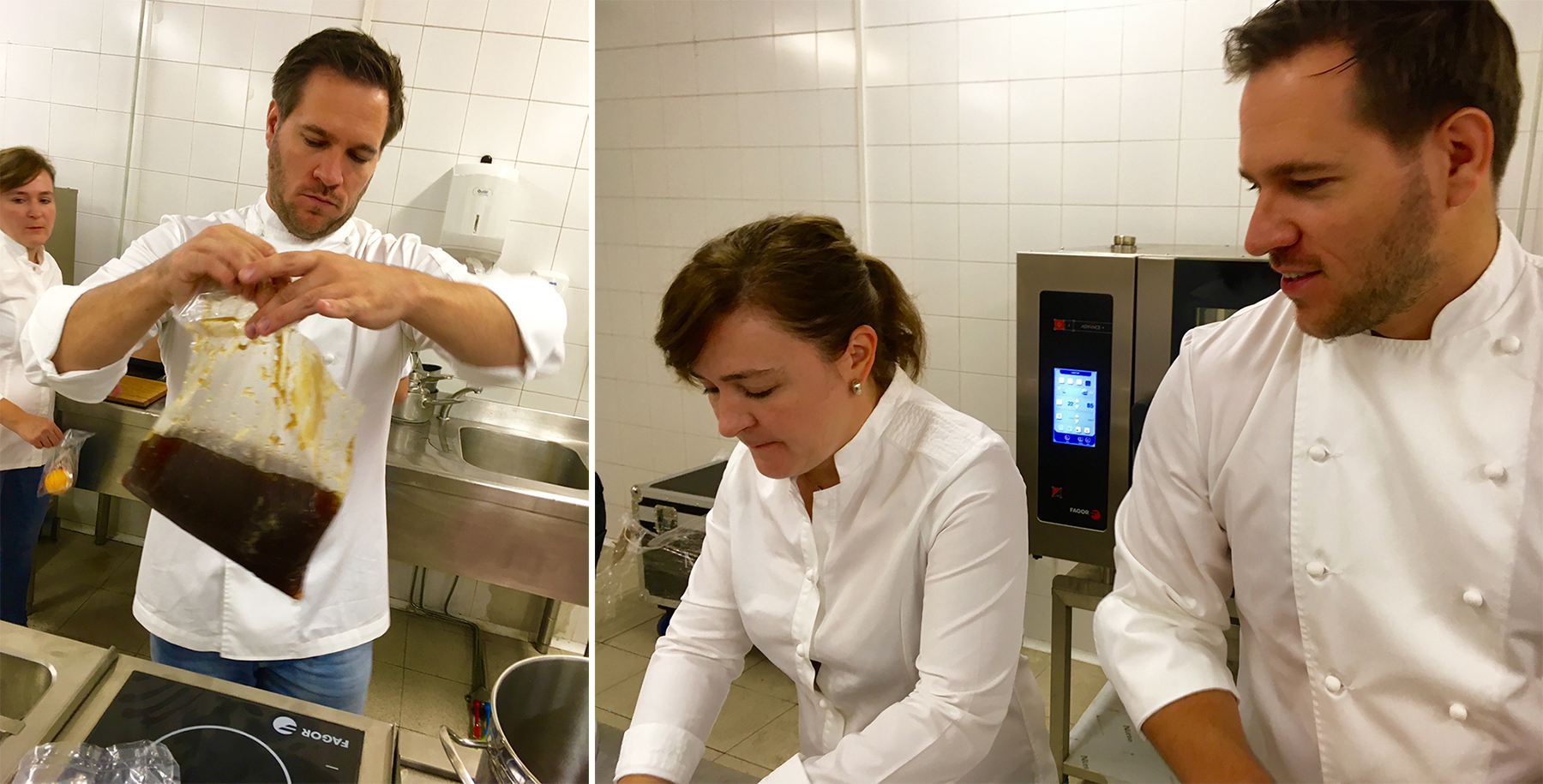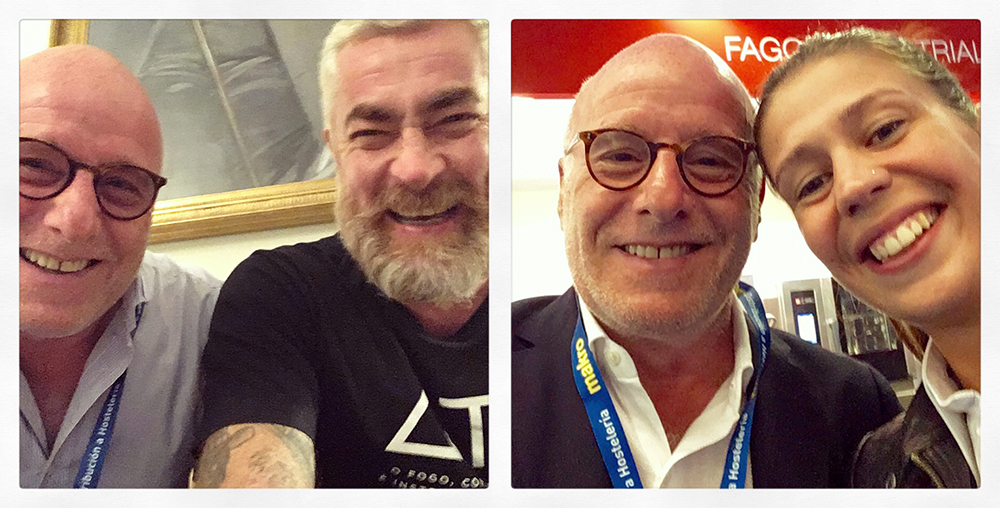It is a special kind of pride for any country when their national identity shines on the international stage. For Hungarians, one example of this identity comes in the form of progressive Hungarian cuisine. It is a great field to excel in, especially in an environment where everyone is an expert, such as the international culinary forum of Gastronomika in San Sebastian, a city where everyone understands great food. If they didn’t have a successful football club, there would be pretty much nothing else to talk about here beyond food. These twin passions are of equal importance to locals and their love of eating is backed by a remarkable culinary knowledge – most restaurateurs can only dream of such an appreciative public. There was also no shortage of international experts either, with the best Basque, Spanish, South American and Turkish chefs all gathered at the event to share ideas, and, above all, to cook and sample dishes.

The venue and the organizers
Welcome gulyás
This success owes much to the staff of Magyar Konyha magazine, who have been building the Basque-Hungarian relationship for many years now. The discovery of a life-and-death passion for food shared by the two peoples only added fuel to the fire. The newly formed Hungarian Tourist Agency and its CEO Zoltán Guller laid the practical foundations for success at the event. It is without any exaggeration at all that I can report that the Hungarian stand was one of the busiest stands at the event, if not the busiest. Mangalica, Hungarian caviar, smoked trout, a Hungarian-Spanish ham, Lajos Bíró’s blood sausage ice cream, furmint from Mád, cherries in brandy from Sauska, a winery in Tokaj, and many other Hungarian delicacies caused quite a stir. And nothing was left to chance, there was Hungarian gulyás, stuffed cabbage and Somló trifle already being served on the street outside the entrance, courtesy of SVÉT, an exclusive club of Hungarian countryside restaurants. Introducing traditional Hungarian cuisine were Szabolcs Dudás from Encs, Péter Pataky, László Ruprecht and János Macsinka from Eger.

The top row from left to right: Vomberg Frigyes ready to opening, Macsinka János (Macok Bisztró), Bíró Lajos, Horváth Gábor (Gusteau)
Bottom row form left: Pauli Zoltán (Palkonyha), Jahni László (Kistücsök), Mihályi Laci pastry chef, Dudás Szabolcs (Anyukám Mondta)
The Hungarian aces
Representatives of Hungary made it onto the stage on six occasions: Eszter Palágyi, the chef of Costes, the Michelin-starred Budapest restaurant, won over the assembled masses with his Hungarian fish soup, quite an achievement given the rich fish-eating culture in the region, where barely a day goes by without fish on the table. The other dilemma is that there are as many varieties of Hungarian fish soup as there are people who speak the language. Eszter briefly explained the role fish soup has played in Hungarian history, and spoke of the varieties cooked over an open fire in cauldrons, before elegantly introducing her own version. Made with matchstick pasta in two colours and delicately roasted pike perch cubes, the soup has an intense paprika broth. The essence of the dish was perfectly understood by the public and greeted with an heartfelt round of applause both for its flavour and aesthetic appeal. The famous fish soup provided by the duo of Szabina Szulló and Tamás Széll also brought the house down with its complex and surprising blend of flavours. I have been saying this for some time now, but this dish really should be the ambassador of Hungarian cuisine with its wonderful and vibrant kaleidoscope of flavour. A good fish soup perfectly captures the fusion of east and west that is modern gastronomy, while at the same time proclaiming its Hungarian identity from the rooftops.

The Szulló-Széll duo and the gulasch
By his own standards, Lajos Bíró was relatively reserved in presenting his potato paprikash as a simple but unforgettable dish of the people that draws attention to the fact there are some dishes that can be loved by everyone. This was nice to hear on the stage as it is a sentiment that in no way goes against the prevailing trends around the world. The audience was not averse to the idea either, as Basque cuisine also boasts similar basic meals. He went on to introduce his traditional chicken paprikash, pointing out the lamentable fact that the paprikash dishes referred to as ‘gulyás’ in western Europe are generally neither gulyás, nor paprikash, nor pörkölt. He briefly explained this mystery to the audience, and then introduced his own avant-garde version of the dish, livened up with frogs legs and served on a vinyl record – to universal acclaim. Master confectioner László Mihályi began by discussing the rich heritage of Hungarian confectionery. He spoke about József C. Dobos and introduced his own take on the Dobos torte, a favourite of the sweet-toothed around the world. This is the perfect example of how to update a recipe to create an innovative dessert with a more intense flavour to suit the tastes of the modern age while preserving every important element of the original. Zoltán Hamvas, President of the Hungarian Bocuse d’Or Academy, officially thanked the opportunity to participate in the event and also said a few words about the world-famous Gerbeaud Confectionery. The audience held their breath as they watched the short image film and even I was impressed, even though I am a Gerbeaud enthusiast of many years standing. The presentation of the furmint wine variety held by Gabriella Mészáros was also followed with great interest, especially as she accompanied the wine with goose liver samples of various flavours expertly prepared by Ruprecht László.

The writer with Alex Atala (left) and with Eszter Palágyi (the Michelin-star chef of Costes, Hungary)
Pictues made by the write, Pierre Vajda himself.





Write a comment
To write a comment you should sign in to with your account